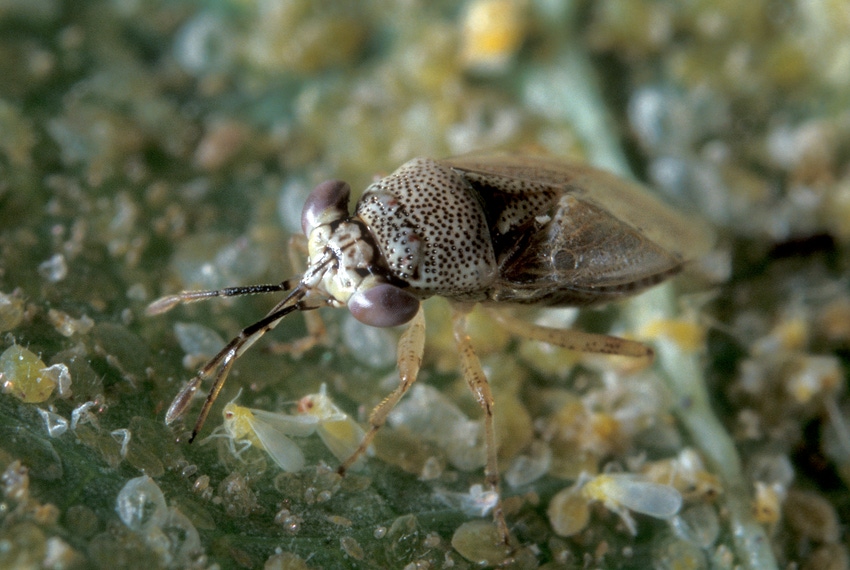
Geocoris are important predators found throughout the United States in agricultural crops.Geocoris are commonly known as “big-eyed bugs” due to the characteristic large, prominent, widely separated eyes on the sides of the head.In Arizona cotton, Geocoris feed on all stages of whitefly, lygus nymphs, thrips, lepidopteran eggs and small larvae, mites, plus other beneficial species.
August 15, 2011

By Peter Asiimwe, Lydia Brown, Tim Vandervoet, and Peter Ellsworth - University of Arizona; and Steven Naranjo, USDA Agricultural Research Service
Geocoris, pronounced jee•AH•kor•is, (Family: Geocoridae), are important predators found throughout the United States in agricultural crops. Geocoris are commonly known as “big-eyed bugs” due to the characteristic large, prominent, widely separated eyes on the sides of the head.
The insects actively hunt for victims. The big eyes provide a wide field of vision and boost the ability to locate prey.
Geocoris use a long straw-like beak to stab and kill the prey before sucking up the liquefied contents and leave behind a hollow cadaver.
Geocoris deposit eggs singly and horizontally on leaf or stem surfaces. The hot dog-shaped eggs are distinguished from other insect eggs by the presence of two red eyespots near the tip.
Predatory stages include five nymphal instars and a winged adult. Nymphs look similar to adults but are smaller and lack wings.
False chinch bugs, a closely related insect with decidedly plant-feeding tendencies, can sometimes be confused with Geocoris. False chinch bugs are more slender than big-eyed bugs and have less pronounced eyes.
In Arizona cotton, Geocoris feed on all stages of whitefly, lygus nymphs, thrips, lepidopteran eggs and small larvae, mites, plus other beneficial species.
Two Geocoris species are routinely found in Arizona summer crops: G. pallens and G. punctipes. These species can be separated by color and size. G. pallens tends to be a slightly smaller and darker species. Both species feed similarly, but G. punctipes generally consumes more prey, and in most years is the more abundant species in cotton.
Research shows the insects are important mid-to-late season predators with significant impact on whitefly and lygus populations. However, the insects are also sensitive to many broad-spectrum insecticides.
Geocoris is a key natural enemy with a work-horse reputation in cotton fields. Presence of Geocoris eggs and nymphs in the field indicates a healthy, reproducing population with excellent potential for biological control.
The selective chemistries recommended in our cotton IPM guidelines conserve Geocoris and maintain the ‘free control’ benefit from this important predator.
For additional information on Geocoris including related photos of the different species, click on this link - http://ag.arizona.edu/crops/cotton/files/GeocorisShortvFc.pdf.
You May Also Like



